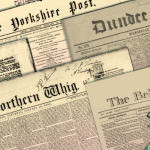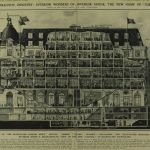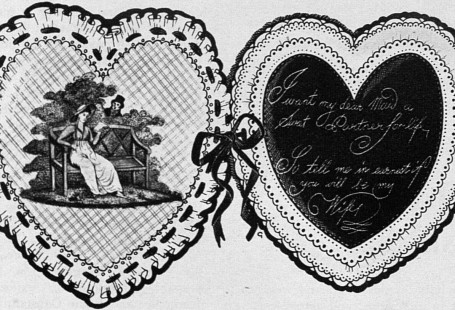Throughout the month of October, The British Newspaper Archive will take a closer look at stories of crime, courts, and punishment in the papers. We have pulled together some headlines from the month of October including a riot, a case of arsenic poisoning, a couple of London’s notorious criminals, and a political crime.
4 October 1936
The Battle of Cable Street took place in London’s East End on the day of a scheduled march by Oswald Mosley’s right wing organisation the British Union of Fascists (BUF). Mosley established the organisation in 1931. They were in support of Hitler’s rise to power in Germany and anti-Semitism. They believed in authoritative nationalism and aggressive suppression of opposition. On the day of the march, up to 100,000 counter-protesters turned up to oppose the march. Moments before the march was set to begin, Sir Philip, the Metropolitan Police Commissioner, banned the demonstration due to the large numbers of counter protesters. Riots and disturbances broke out between counter-protesters, police, and fascists. On Cable Street, which was part of the original march route, counter-protesters set up barricades including an over-turned lorry. We have pulled together some of the headlines and images from the event. Throughout the day over 80 people were injured and 84 arrests were made.


Sheffield Independent 5 October 1936

Illustrated London News | 10 October 1936

Illustrated London News | 10 October 1936
12 October 1915

On 12 October 1915, British nurse Edith Cavell was executed in Brussels by a German firing squad for helping British, French, and Belgian soldiers escape from Belgium during the First World War. Cavell funnelled the soldiers out of Belgium and into neutral Netherlands. Her bravery saved the lives of around 200 soldiers. Cavell became the matron of a nursing school in Brussels in 1906 and then in 1910 she became the matron of St Giles hospital. Below is an image of the nursing institute in Brussels.

Her execution was widely publicised and memorial services held throughout the country. Thousands gathered at St Paul’s Cathedral in London to pay their respects.

14 October 1843

Daniel O’Connell is undoubtedly one of the most popular and influential individuals in Irish history. He has become known as ‘The Liberator’ for his work towards Catholic Emancipation. In the 1840s, O’Connell had established the Repeal Association and was working towards repealing the 1801 Act of Union. To gain support for his campaign, O’Connell held ‘monster meetings’ where thousands turned up to hear the great orator. One of the monster meetings scheduled for 7 October 1843 at Clontarf was banned by the Lord Lieutenant. O’Connell cancelled the demonstration; however, crowds were on their way. On 14 October 1843, Daniel O’Connell along with 8 others, were arrested on the charge of conspiring to undermine the constitution and other misdemeanours.

You can read details of his arrest in the Newcastle Journal. At 3pm O’Connell and the others, including his son John O’Connell, arrived at the home of Justice Burton to enter bail. ‘All the parties were shown into the beautifully decorated drawing room, which contains a large collection of pictures of the rarest and finest character. Mr O’Connell appeared in good spirits, but his son and several of his friends were a good deal depressed’.
The conservative Irish newspapers of the time did not speak favourably of O’Connell.
‘For a long time he seems really to have laboured under the delusion that he was King of Ireland, leader of a physical force capable of overawing the united kingdom, and protected for all molestation by the mere fears of his antagonists. Drunk with self-satisfied vanity, Mr O’Connell wholly forgot himself and allowed his tongue, always sufficiently unruly, to run wild into any kind of sedition that came to hand’. – Tralee Chronicle – 21 October 1843
Daniel O’Connell was charged and sentenced to a year in prison with a fine. O’Connell appealed the conviction and subsequently the following year the charges were dismissed. O’Connell only spent a few months in prison, but during these months the repeal campaign lost its momentum and never recovered.
His arrest and the subsequent trial, sentencing, appeal, and dismissal of charges were covered extensively in the papers. To find more search for “Daniel O’Connell” and refine your search to 1840-1849.
27 October 1847
In Hackney in 1847, 11-year-old William Allnutt was found guilty of the wilful murder of his 74-year-old grandfather, Samuel Nelme, Esq. by poisoning. Nelme had reported feeling unwell for a number of days and sent for a doctor. However, as there was no sign of poisoning, Nelme was only given medicine before the doctor left. Later that day, Nelme had died. The post mortem found his stomach contained a large quantity of arsenic. It was discovered that William Allnutt had found his grandfather’s supply of arsenic and mixed it with the home’s sugar. The initial coroner’s inquest and the grand jury was widely reported.

This may have not been the child’s first attempt at murder. An initial report from Lloyd’s Weekly London News, stated that the grandson was suspected of a previous attempt on his grandfather’s life with a pistol.
While Allnutt was held at Newgate, he wrote a letter to his mother confessing to the crime. During her testimony, Allnutt’s mother explained that William’s intellect was impaired. After the admission of the confession letter the grand jury returned the following verdict: ‘That Samuel Nelme died from taking sugar, with which arsenic had been feloniously mixed by William Newton Allnutt, whom we find guilty of wilful murder’.

29 October 1967

On 29 October 1967, Jack ‘the Hat’ McVitie was murdered in London. The murder became famous for consequently leading to the downfall of the legends of the East End, the infamous Kray Twins. The Kray twins were notorious for their criminal activities – robberies, assaults, and racketeering. Their gang, known as the Firm, included their third brother Charles. The initial murder was not extensively reported, but the trial and sentencing was reported. Below are some of the headlines from the case.



30 October 1821

To complete our round up of crime and punishment in the month of October we have to mark the birth of the great Russian novelist, Fyodor Dostoevsky, the author of Crime and Punishment. The novel was initially published as twelve instalments in 1866. It tells the story of Raskolnikov and his murder of a dishonest pawn broker. A 1914 review of a new translation of Dostoevsky’s novel explains that the author would never achieve popularity because his works are ‘too analytical, too sombre, and too long for common taste’. It also declares Crime and Punishment to be his greatest novel, ‘a masterpiece in sustained and minute psychological analysis, and the model for countless studies in the temperament of crime’.

Subscribe today and search for more stories of crime, courts, and punishment.






